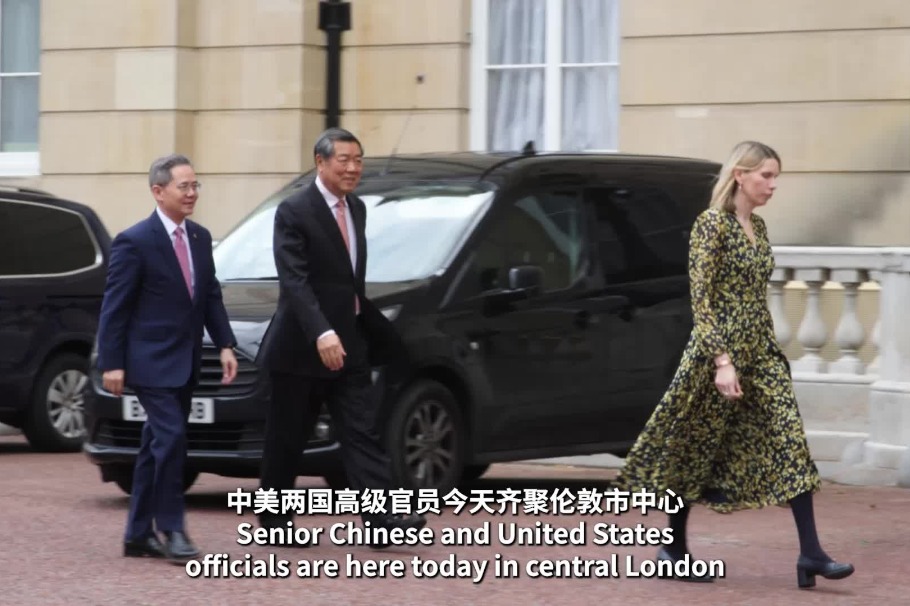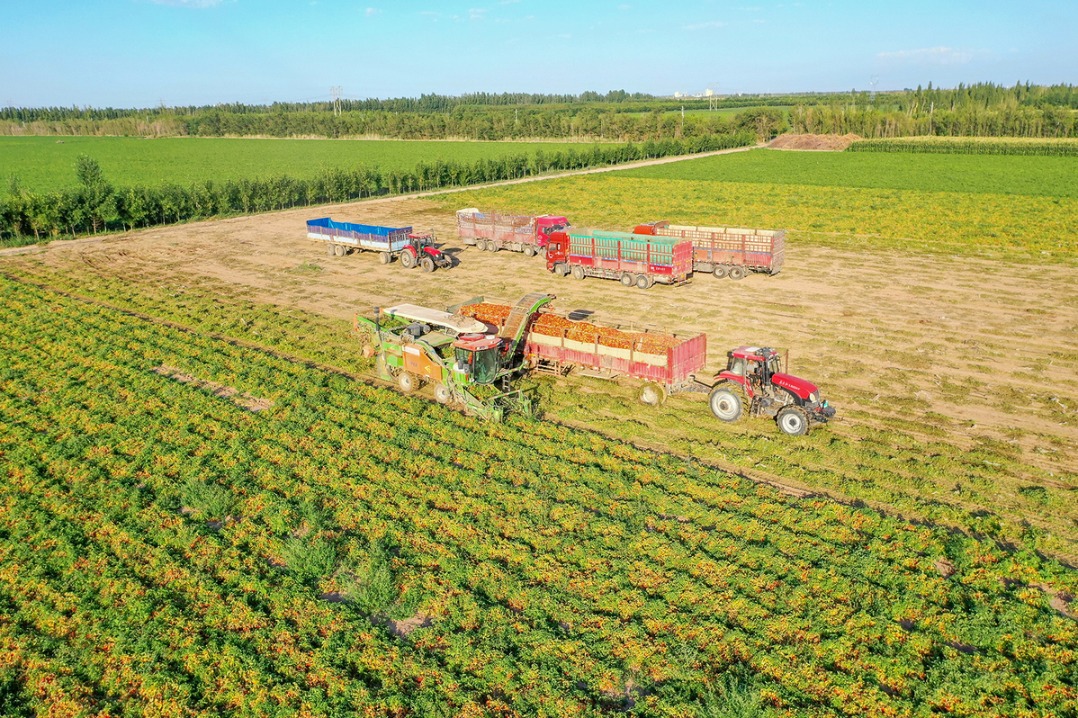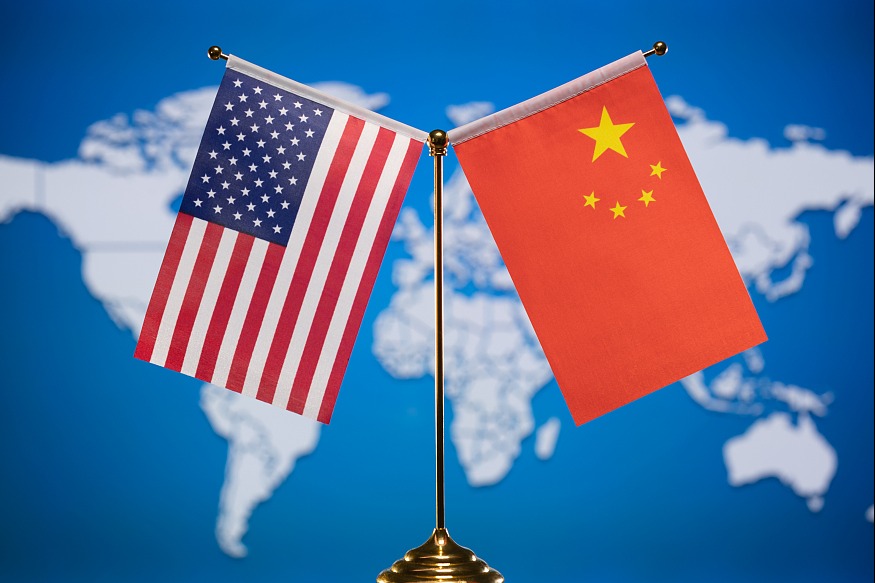China ensures food security based on rule of law


On May 20 during an inspection tour in Henan province, President Xi Jinping emphasized the importance of protecting arable land, securing food supplies, and advancing rural vitalization through integrated urban-rural development. His remarks resonate with China's ongoing efforts to implement the Food Security Law, which came into effect on June 1, 2024. Enacted to ensure stable grain supply, strengthen risk prevention, and safeguard national security, the law marks a milestone in China's long-term strategy for food resilience.
Extreme weather events dealt a heavy blow to grain production in many countries in the Northern Hemisphere last year, while grain production in 26 of China's 31 provincial level regions increased because of the effectiveness of the country's agricultural system and its efforts to build a food security governance system based on the rule of law.
The Food Security Law, which was passed in 2023 and came into effect in 2024, marks a new stage of China's food security governance. The legal framework covers elements such as innovation in the seed industry, digital agricultural and risk management, a multi-dimensional security system establishment and closed loop formation from the laboratory to the field. China's law is helping reshape global food security by promoting institutional innovation and providing a new paradigm for addressing food crises.
The law has reiterated the protection of cultivable land, significantly improved the development of high-standard farmland through the establishment of an assessment mechanism.
The risk prevention and control system helps prevent and control food security risks, and establish a resistance belt to guard against multiple risks. The Food Security Law has also helped forge tripartite cooperation through institutional arrangements that make clear the government's responsibilities, regulate market operations, encourage social participation, and form a synergy to ensure food security. After the law came into effect, a multi-party governance framework based on tripartite collaboration has been established.
First, by making clear the assessment mechanism of protection of cultivable land, China will strengthen the "rice bag" responsibility system of governors and strengthen administrative functions. Second, China will establish market-based purchase loan credit guarantee funds and other policy tools to regulate grain circulation and help boost the vitality of market entities, so as to balance efficiency with fairness. And third, the government will set up innovative mechanisms for social supervision and public participation, and bring new agricultural operators and grassroots communities into the governance network to form a co-governance pattern.
The legislative design that integrates administrative regulation, market mechanism and social governance has not only ensured cultivable land is protected but also unleashed the country's full production potential for the benefit of the Chinese people.
In fact, China's Food Security Law is the world's first systematic legislation on food security, which can be used as reference by other developing countries to address their food security governance challenges.
At the governance structure level, the law promotes the protection of agricultural land to ensure sufficient food production, and includes farmland protection and scientific and technological input to boost production in the performance assessment of government departments.
At the risk response level, the coordination mechanism between central and local reserves provides valuable reference for food security cooperation in the ASEAN+3 Cooperation Work Plan 2023-27. Some countries involved in Belt and Road agricultural cooperation and the Global Development Initiative have learned from the measures China has taken to strengthen fair and sustainable food security governance.
Ensuring food security for over 1.4 billion people is equivalent to stabilizing the food supply for more than 17 percent of the global population. Since joining the South-South Cooperation Program of the UN Food and Agriculture Organization in 2008, China has supported more than 70 projects in 30 countries. It has made food security a priority for global development cooperation, offering systematic solutions to developing countries and promoting food security cooperation. Under the FAO framework, Chinese experts have demonstrated how to use more than 1,000 agricultural technologies to host countries' experts and officials, resulting in an average 30-60 percent increase in crop production in project areas and benefiting more than 1 million smallholder farmers.
China has shown how to strengthen food security governance, use science and technology to protect cultivable land, and build institutions to prevent risks. The initiative helps convert institutional advantages into effective governance to safeguard food security, thus minimizing fluctuations in the international market.
The Food Security Law has created a virtuous circle of "protecting ourselves", "contributing to the world", and providing a blueprint for food security governance in order to help build a community with a shared future for humankind.
Moreover, China's law-based food security governance is in line with the UN Sustainable Development Goals, and can help address regional food crises and achieve the SDGs of "eliminating hunger, achieving food security, improving nutrition and promoting sustainable agriculture".
Wei Longbao is a Qiushi distinguished professor and director of the Institute of Food and Agribusiness Management, Zhejiang University; and Zhang Qirui is a doctoral candidate at the School of Public Affairs, Zhejiang University.
The views don't necessarily represent those of China Daily.
If you have a specific expertise, or would like to share your thought about our stories, then send us your writings at opinion@chinadaily.com.cn, and comment@chinadaily.com.cn.


































